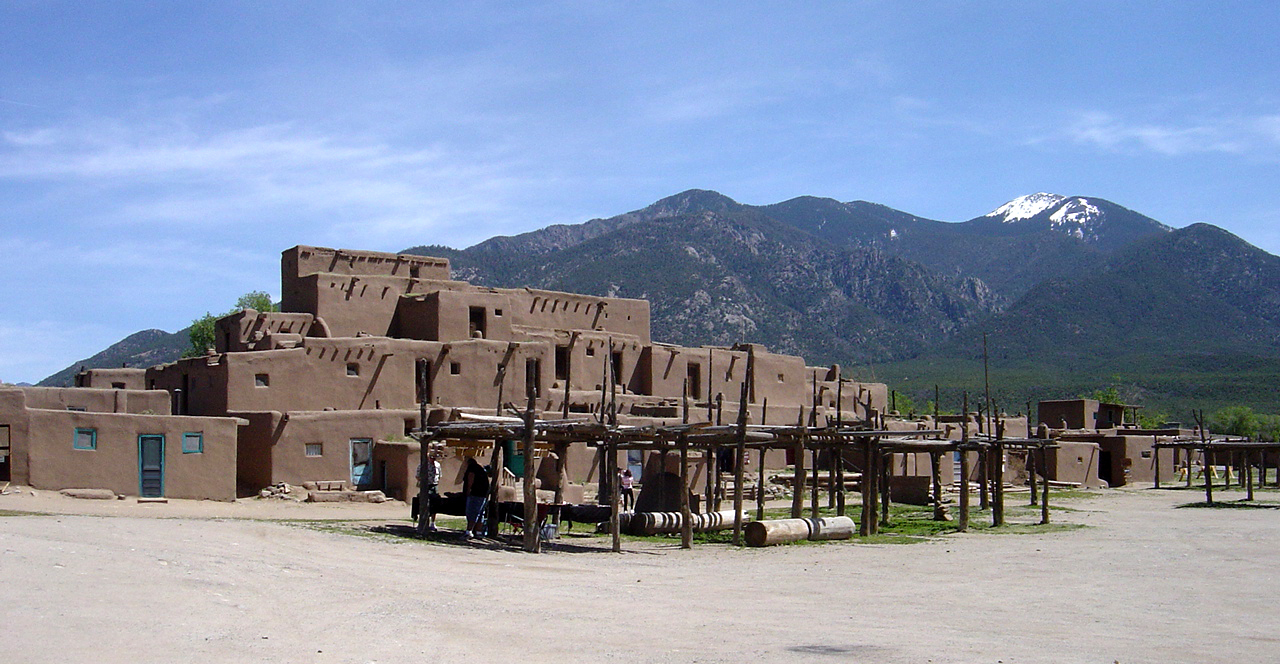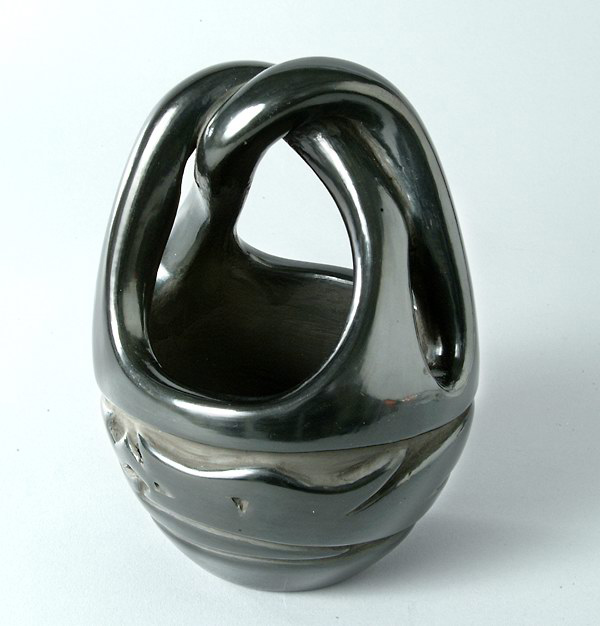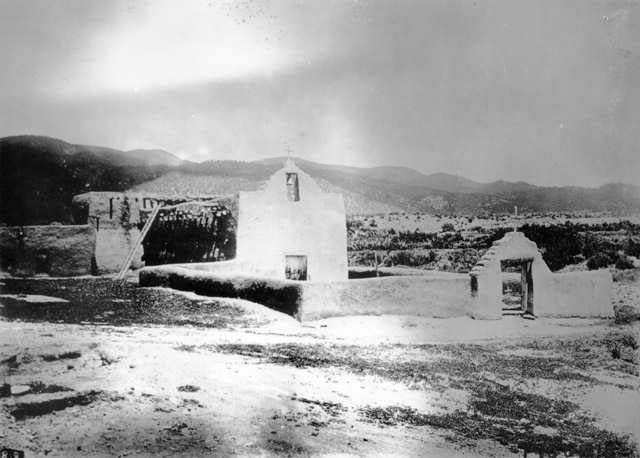|
El Quartelejo
El Cuartelejo, or El Quartelejo (from Spanish ''cuartelejo'', meaning ''old building'' or ''barracks''), is a region in eastern Colorado and western Kansas where Plains Apache cohabited with Puebloans. Subject to religious persecution, Puebloans fled the Spanish Nuevo México territory and cohabitated with the Cuartelejo villagers in the 1600s. Some people fled to the Arkansas River area of present-day Kiowa County, Colorado. Juan de Ulibarri came to the Arkansas River area of Colorado in 1706 to capture and return Pueblo Native Americans who fled Nuevo Mexico in 1680. In Kansas, an archeological district is the site of a Plains Apache and Puebloan village. It is the northernmost Native American pueblo and the only known pueblo in Kansas. Located in Lake Scott State Park, the remains of the stone and adobe pueblo are situated 13 miles north of Scott City, Kansas, in Ladder Creek Canyon. It is also known as The Scott County Pueblo. In 1964, El Cuartelejo Archaeologist Distric ... [...More Info...] [...Related Items...] OR: [Wikipedia] [Google] [Baidu] |
Lake Scott State Park
Lake Scott State Park is a Kansas state park in Scott County, Kansas in the United States. The park was established in 1928 following a donation of the land by the Herbert Steele family. The park, also known as Scott State Park, surrounds Lake Scott, a spring-fed freshwater lake. Lake Scott State Park is between Oakley and Scott City, about one mile west of U.S. Route 83 on Route K-95. The park is open for year-round recreation including camping, hunting, fishing, hiking, boating and picnicking. Lake Scott State Park is home to the only known Indian pueblo in Kansas, El Cuartelejo. History Lake Scott State Park is the site of a ruined Taos Pueblo. The Taos arrived in western Kansas in 1664. After having escaped the Spanish colonial rule in New Mexico. They formed an alliance with a group of Plains Apache. The Taos Indians built the protective pueblos and an irrigation system from a nearby spring to water their crops. The settlement, known as El Cuartelejo, was occupied f ... [...More Info...] [...Related Items...] OR: [Wikipedia] [Google] [Baidu] |
Taos, New Mexico
Taos is a town in Taos County in the north-central region of New Mexico in the Sangre de Cristo Mountains. Initially founded in 1615, it was intermittently occupied until its formal establishment in 1795 by Nuevo México Governor Fernando Chacón to act as fortified plaza and trading outpost for the neighboring Native American Taos Pueblo (the town's namesake) and Hispano communities, including Ranchos de Taos, Cañon, Taos Canyon, Ranchitos, El Prado, and Arroyo Seco. The town was incorporated in 1934. As of the 2010 census, its population was 5,716. Taos is the county seat of Taos County. The English name ''Taos'' derives from the native Taos language meaning "(place of) red willows". Taos is the principal town of the Taos, NM, Micropolitan Statistical Area, which includes all of Taos County. History Taos Pueblo The Taos Pueblo, which borders the north boundary of the town of Taos, has been occupied for nearly a millennium. It is estimated that the pueblo was b ... [...More Info...] [...Related Items...] OR: [Wikipedia] [Google] [Baidu] |
Ute People
Ute () are the Indigenous people of the Ute tribe and culture among the Indigenous peoples of the Great Basin. They had lived in sovereignty in the regions of present-day Utah and Colorado in the Southwestern United States for many centuries until European settlers conquered their lands. The state of Utah is named after the Ute tribe. In addition to their ancestral lands within Colorado and Utah, their historic hunting grounds extended into current-day Wyoming, Oklahoma, Arizona, and New Mexico. The tribe also had sacred grounds outside their home domain that were visited seasonally. There were 12 historic bands of Utes. Although they generally operated in family groups for hunting and gathering, the communities came together for ceremonies and trading. Many Ute bands were culturally influenced by neighboring Native American tribes and Puebloans, whom they traded with regularly. After contact with early European colonists, such as the Spanish, the Ute formed trading rela ... [...More Info...] [...Related Items...] OR: [Wikipedia] [Google] [Baidu] |
Comanche
The Comanche or Nʉmʉnʉʉ ( com, Nʉmʉnʉʉ, "the people") are a Native American tribe from the Southern Plains of the present-day United States. Comanche people today belong to the federally recognized Comanche Nation, headquartered in Lawton, Oklahoma. The Comanche language is a Numic language of the Uto-Aztecan family. Originally, it was a Shoshoni dialect, but diverged and became a separate language. The Comanche were once part of the Shoshone people of the Great Basin. In the 18th and 19th centuries, Comanche lived in most of present-day northwestern Texas and adjacent areas in eastern New Mexico, southeastern Colorado, southwestern Kansas, and western Oklahoma. Spanish colonists and later Mexicans called their historical territory '' Comanchería''. During the 18th and 19th centuries, Comanche practiced a nomadic horse culture and hunted, particularly bison. They traded with neighboring Native American peoples, and Spanish, French, and American colonists an ... [...More Info...] [...Related Items...] OR: [Wikipedia] [Google] [Baidu] |
Pawnee People
The Pawnee are a Central Plains Indian tribe that historically lived in Nebraska and northern Kansas but today are based in Oklahoma. Today they are the federally recognized Pawnee Nation of Oklahoma, who are headquartered in Pawnee, Oklahoma. Their Pawnee language belongs to the Caddoan language family, and their name for themselves is Chatiks si chatiks or "Men of Men". Historically, the Pawnee lived in villages of earth lodges near the Loup River, Loup, Republican River, Republican, and Platte River, South Platte rivers. The Pawnee tribal economic activities throughout the year alternated between farming crops and hunting American bison, buffalo. In the early 18th century, the Pawnee numbered more than 60,000 people. They lived along the Loup River, Loup (ickariʾ) and Platte River, Platte (kíckatuus) river areas for centuries; however, several tribes from the Great Lakes began moving onto the Great Plains and encroaching on Pawnee territory, including the Dakota people, ... [...More Info...] [...Related Items...] OR: [Wikipedia] [Google] [Baidu] |
Villasur Expedition
The Villasur expedition of 1720 was a Spanish military expedition intended to check New France's growing influence on the North American Great Plains, led by Lieutenant-General Pedro de Villasur. Pawnee and Otoe Indians attacked the expedition in Nebraska, killing 36 of the 40 Spaniards, 10 of their Indian allies, and a French guide. The survivors retreated to their base in New Mexico. Background In the first part of the 18th century, French explorers and fur traders began to enter the plains west of the Missouri River, which they claimed as Louisiana. In 1714, Étienne de Veniard, Sieur de Bourgmont became the first colonial explorer known to have reached the mouth of the Platte River, although other French traders may have visited the area and lived among the Indians. Spain had claimed ownership of the Great Plains since the Coronado expedition of the 16th century, but had done little to assert this claim, and now worried about the growing French influence in the region. ... [...More Info...] [...Related Items...] OR: [Wikipedia] [Google] [Baidu] |
Juan De Ulibarrí
Juan de Ulibarrí or Uribarrí (1670-1716) was a Spanish or Criollo soldier and explorer who lived in New Mexico. In 1706 he led an expedition to El Cuartelejo on the Great Plains of western Kansas and eastern Colorado. Ulibarrí's diary survives and is an important source for the history of Spanish exploration of the Great Plains and relationships with the Apache and Pueblo Indians. The purpose of Ulibarrí's expedition was to find and escort back to New Mexico about 60 people from Picuris Pueblo who had earlier fled Spanish rule in New Mexico and established communities on the Great Plains. The Cuartelejo Ruins in Kansas are a remnant of the Pueblos who lived on the plains. Early life According to genealogical research, Ulibarrí (also known as Juan de los Reyes) was born in San Luis Potosi, Mexico and baptized there on March 8, 1670. His parents were Jose Enriquez de los Reyes and Maria Hernandez Ynojos. He had a brother named Antonio and both came to New Mexico with ... [...More Info...] [...Related Items...] OR: [Wikipedia] [Google] [Baidu] |
Pueblo Revolt
The Pueblo Revolt of 1680, also known as Popé's Rebellion or Popay's Rebellion, was an uprising of most of the indigenous Pueblo people against the Spanish colonizers in the province of Santa Fe de Nuevo México, larger than present-day New Mexico. The Pueblo Revolt killed 400 Spaniards and drove the remaining 2,000 settlers out of the province. The Spaniards reconquered New Mexico twelve years later. Background For more than 100 years beginning in 1540, the Pueblo people of present-day New Mexico were subjected to successive waves of soldiers, missionaries, and settlers. These encounters, referred to as ''entradas'' (incursions), were characterized by violent confrontations between Spanish colonists and Pueblo peoples. The Tiguex War, fought in the winter of 1540–41 by the expedition of Francisco Vásquez de Coronado against the twelve or thirteen pueblos of Tiwa Native Americans, was particularly destructive to Pueblo and Spanish relations. In 1598 Juan de Oñate led 129 ... [...More Info...] [...Related Items...] OR: [Wikipedia] [Google] [Baidu] |
Santa Clara Pueblo
Santa Clara Pueblo (in Tewa: Khaʼpʼoe Ówîngeh ɑ̀ʔp’òː ʔówîŋgè ″Singing Water Village″, also known as ″Village of Wild Roses″ is a census-designated place (CDP) in Rio Arriba County, New Mexico, United States and a federally recognized tribe of Native American Pueblo people. The pueblo is a member of the Eight Northern Pueblos, and the people are from the Tewa ethnic group of Native Americans who speak the Rio Grande Tewa language. The pueblo is on the Rio Grande, between Ohkay Owingeh (formerly San Juan Pueblo) to the north and San Ildefonso Pueblo (P'ohwhóge Owingeh) to the south. Santa Clara Pueblo is famous for producing hand-crafted pottery, specifically blackware and redware with deep engravings. The pueblo is listed on the National Register of Historic Places. Geography Santa Clara Pueblo is located at (35.971124, -106.089111), approximately 1.5 miles south of Española on NM 30. According to the United States Census Bureau, the CDP h ... [...More Info...] [...Related Items...] OR: [Wikipedia] [Google] [Baidu] |
Tewa
The Tewa are a linguistic group of Pueblo Native Americans who speak the Tewa language and share the Pueblo culture. Their homelands are on or near the Rio Grande in New Mexico north of Santa Fe. They comprise the following communities: * Nambé Pueblo * Pojoaque Pueblo * San Ildefonso Pueblo * Ohkay Owingeh * Santa Clara Pueblo. * Tesuque Pueblo The Hopi Tewa, descendants of those who fled the Second Pueblo Revolt of 1680–1692, live on the Hopi Reservation in Arizona, mostly in Tewa Village and Polacca on the First Mesa. Other Hopi clans are known to be descendants of Tewa people.J. Walter Fewkes, The Butterfly in Hopi Myth and Ritual. ''American Anthropologist'', New Series, Vol. 12, No. 4 (Oct. - Dec., 1910), pp. 576–594 Tewa is one of five Tanoan languages spoken by the Pueblo people of New Mexico. Though these five languages are closely related, speakers of one cannot fully understand speakers of another (similar to German and Dutch speakers). The six Tewa-sp ... [...More Info...] [...Related Items...] OR: [Wikipedia] [Google] [Baidu] |
Picuris Pueblo, New Mexico
Picuris Pueblo (; Tiwa: P'įwweltha ’ī̃wːēltʰà is a historic pueblo in Taos County, New Mexico, United States. It is also a census-designated place (CDP) and a federally recognized tribe of Native American Pueblo people. The 2010 census estimated that 68 people lived in the CDP, while 267 people in the U.S. reported being of the tribal group Picuris alone and 439 reported being of the tribal group Picuris alone or in combination with other groups. Picurís Pueblo is a member of the Eight Northern Pueblos. Their own name for their pueblo is ''P'įwweltha'', meaning "mountain warrior place" or "mountain pass place." They speak the Picuris dialect of the Northern Tiwa language, part of the Kiowa-Tanoan language family. Geography Picuris Pueblo is located in northern New Mexico, on the western slopes of the Sangre de Cristo Mountains and 18 miles south of Taos Pueblo. Average elevation in the pueblo is over 7,000 feet.Pritzker, Barry M. ''A Native American Encyclopedia ... [...More Info...] [...Related Items...] OR: [Wikipedia] [Google] [Baidu] |
Taos Pueblo
Taos Pueblo (or Pueblo de Taos) is an ancient pueblo belonging to a Taos-speaking (Tiwa) Native American tribe of Puebloan people. It lies about north of the modern city of Taos, New Mexico. The pueblos are considered to be one of the oldest continuously inhabited communities in the United States. This has been designated a UNESCO World Heritage Site. Taos Pueblo is a member of the Eight Northern Pueblos. Natives will almost never speak of their religious customs to outsiders, and, because their language has never been written down, much of the culture remains unknown to the rest of the world. A tribal land of is attached to the pueblo, and about 4,500 people live in this area. Setting The pueblo was constructed in a setting backed by the Taos Mountains of the Sangre de Cristo Range. The settlement was built on either side of Rio Pueblo de Taos, also called Rio Pueblo and Red Willow Creek, a small stream that flows through the middle of the pueblo compound. Its headwaters c ... [...More Info...] [...Related Items...] OR: [Wikipedia] [Google] [Baidu] |







